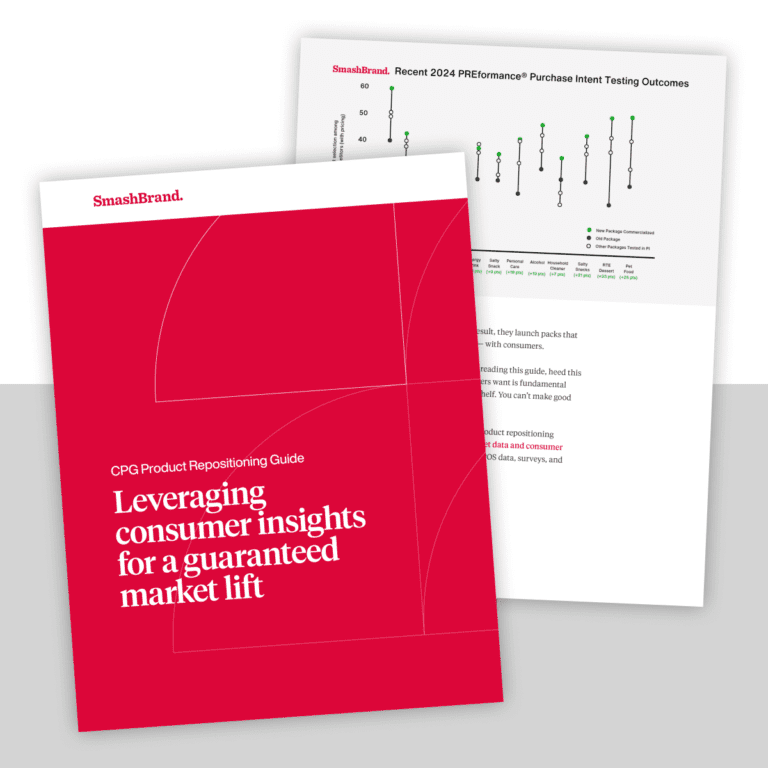We all have walked down the aisle of the local supermarket drearily completing our weekly visit to the grocery store only to suddenly back the cart up and look over at the shelf at something that caught our eye. At this moment the designer who created that packaging gets his wings. Well not really but it is the culmination of months of work for many designers all coming together in a harmonious crescendo of consumer purchasing.
Eye-catching packaging should make a connection with the buyer on as many levels as possible and answer the 3 most important questions the buyer has in 5 seconds.
- Is it clear what the product is and its uses?
- Is this speaking to me on a personal level?
- Is this better in quality, value and appearance?
Products that fail this test usually don’t sell well and as a result are a failure. Now, not all of these are the designers fault as there are budget, time and creative restrictions placed on us all the time but can you get the most out of what you are given?
Let’s take a look at the things you need to do before you start your next design project.
Start with a Mind Meld
Put that mouse and pencil away and get out the old keyboard and fire up a google hangout with your client. The most critical step you can take to achieving a great package design is knowing what, where, when, how and why.
The design kickoff call to the client is one of my favorite parts of a project because the energy is high and anything seems possible but be warned that this phase is a dangerous road for many young designs as they will go off before really understanding what they are designing and the goals the product may have in mind to be considered a success.
Take your time and let the client explain the entire vision, requirements, budget restraints, timelines and any other criteria they may have first. Once that is done ask more questions until you are clear on what that vision is and have a checklist your design will need to hit.
It is also a great idea if you take notes in google docs and share that with the client after the meeting. Sometimes a client after reading what you wrote down will have suggestions, alterations or just want to clarify a point. The more transparent the design process is with a client the more successful the end product becomes.
Play what if
Let your creative energy flow in your kick off call with your client and start throwing ideas out there no matter how crazy they are. It gives you and the client some common ground to see how far apart you are to their vision.
Now is the time to throw out ideas like types of packaging finishes, special spot colors, custom molds and color schemes. Better to find out that the client hates cherry red before you design an entire line of cherry red cheese fondu pot holders. Or that the client never had the budget for a foil treatment but your design falls apart without it.
Many times the client does not know what they are looking for or how to voice this to the designer. You may be surprised how many times the criteria of the project changes because of an idea thrown out at the kick off call. Throwing out creative ideas now also leaves the client feeling confident that they have chosen the right creative team for the project and buys you time while you get to the first round of drafts.
Know your Enemy
It is not just the clients responsibility to understand the marketplace and who the competitors are. Its your job to do as much research as you feel the project needs for you to find the angle and direction of your design that will let you design a great package design.
Even something as simple as taking some shelf photos will aid you greatly in choosing color combinations, look and feel and if the shelf is telling you to stay away from a certain color because its already being overused.
Buy the top 3 competitors. This is something Smashbrand does with almost every project and it has proved extremely helpful having them right on the desk as the design process unfolds.
Look for how well the competition communicates its messages and if needed go back to the client with this information and approach it from a new angle for maximum impact.
Visualization
Not all package designers have the ability to model the package designs in 3d first but here at smashbrand it has become one of the most important tools in the design process. Seeing the design as close to what it will look like in real life helps not only you the designer but the client. And a happy well informed client is a great client!
If you don’t have 3D capabilities make sure you have several front, side and ¾ views mocked up in photoshop ready to go in your production workflow. Just because you see what the finished design looks like in your head doesn’t mean the client will. There is nothing harder than showing a client the flats of your design and saying “Trust me it will look great” and getting that client to understand what they are looking at.
Start to create a library of starter package templates and mockups as these are very handy to use when you start up a project.
Inspiration in odd places
Finally if you are feeling stuck staring at that blank screen or you feel that there is no original design space left to play with in your product, its time to get out. Try to look everywhere for design inspiration and start making connections to the demographic you are trying to hit.
If your demographic for a new men’s cologne is 30-40 year olds but all the packaging is black, silver and splashing red it might be time to introduce other new elements and themes this demographic will respond and relate to.
Metallic textures, suit weaves or even the way a golf club handle is wrapped in carbon fiber may lead you down some creative roads that you were blind to before.
Data-Driven Brand Development
Want a best-selling brand? SmashBrand is a brand development agency for FMCG and CPG companies. From brand strategy to packaging design testing, our Path To Performance™ process guarantees a retail performance lift. Book a time to discuss your project with our team.
Subscribe to
Nice Package.
SmashBrand’s Nice Package: Stay current with our latest insights
Free Resource.

CPG product repositioning guide.
Explore the five undeniable signs your CPG product needs repositioning along with strategies for leveraging consumer insights for a guaranteed market lift.
Download Whitepaper About CPG product repositioning guide.